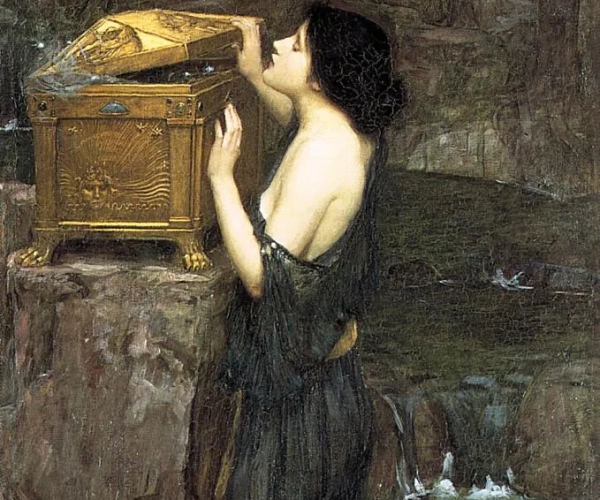Pandora 1896
John William Waterhouse's "Pandora" is a captivating depiction of the mythological figure from Greek mythology. Painted in 1896, this artwork showcases Waterhouse’s mastery of the Pre-Raphaelite style, characterized by rich colors, intricate details, and a focus on romantic and mythical themes.
Waterhouse's portrayal of Pandora is both alluring and enigmatic, capturing the essence of the myth. The central figure of Pandora is depicted in a pensive moment, holding the fateful box from which all the world's evils were released. The artist skillfully conveys Pandora's curiosity and apprehension, creating a sense of tension and drama within the composition.
The use of symbolism is prevalent in "Pandora," with various elements contributing to the narrative. The ethereal presence of Pandora is heightened by the inclusion of a peacock, symbolizing immortality and the divine, while a cat rests at her feet, representing both domesticity and mystery.
The attention to detail in the depiction of fabrics, textures, and the interplay of light and shadow adds depth and realism to the scene. Waterhouse's meticulous brushwork and the subtle incorporation of symbolism elevate "Pandora" beyond a mere representation of the myth, infusing it with layers of meaning and emotion.
Furthermore, the contrast between the radiant figure of Pandora and the darker, more foreboding background reinforces the dichotomy between hope and despair, a central theme in the myth of Pandora.
Overall, "Pandora" stands as a testament to Waterhouse's artistic prowess, showcasing his ability to breathe life into timeless mythological narratives while infusing them with a distinct sense of emotion and symbolism.







No Comments Yet...